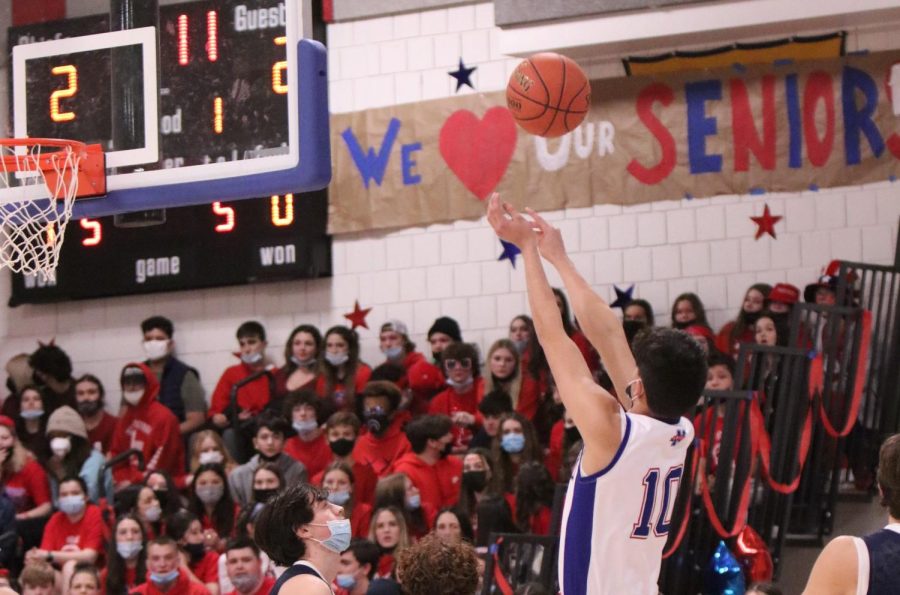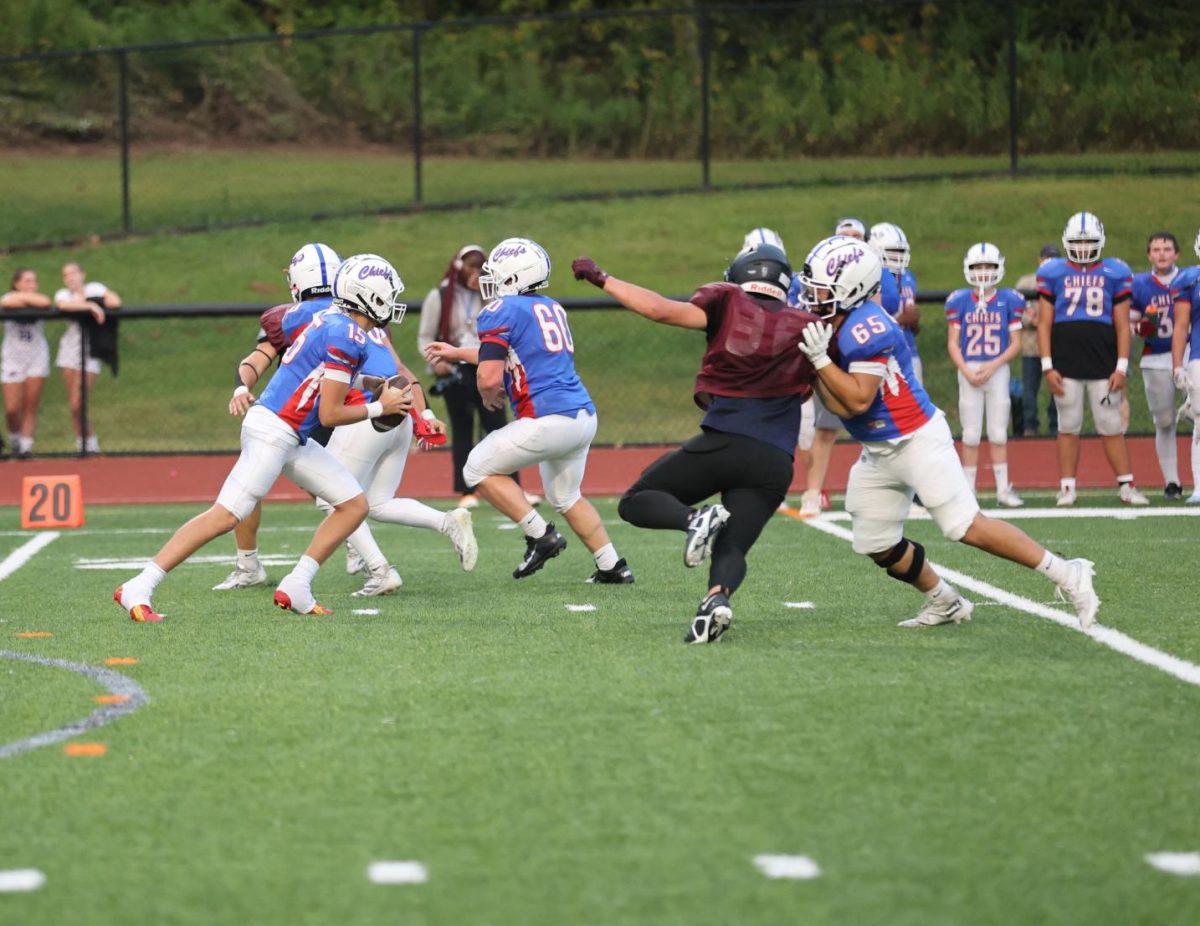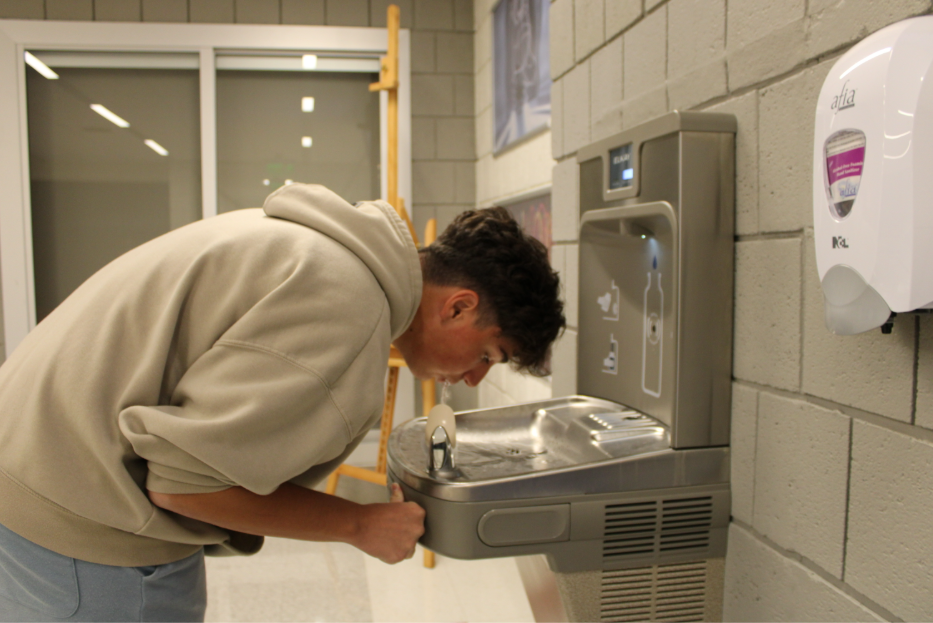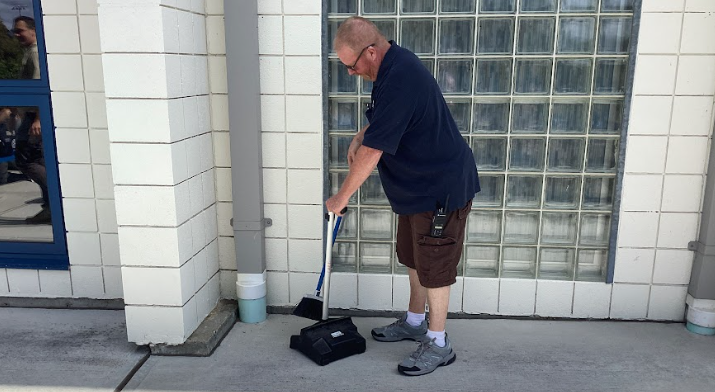Shot Clock Coming to High School Hoops in 2023-24
Dylan Chung shoots for Nonnewaug against Shepaug last season. This will be the final year played before the CIAC implements a shot clock in all varsity games during the 2023-24 season.
December 6, 2022
WOODBURY — A 35-second shot clock will be used in Connecticut high school basketball starting in the 2023-24 season, according to the CIAC Board of Control. Only at the varsity level is the shot clock required; at the JV and freshman levels, it will be optional.
At the varsity level, an adult will be required to operate the shot clock; however, at the JV and freshman levels, an adult won’t be required to run the shot clock.
A proposal by the CIAC boys and girls basketball committees served as the foundation for the shot clock’s implementation, which was subsequently supported by CIAC schools and the CIAC Board of Control.
“I think that this would be a big change for high school basketball,” said Nonnewaug junior Carson Buck. “It will definitely change coaches’ game plans and will have a permanent affect on the high school level.”
Although there may not be many changes for this winter, for the upcoming seasons, coaches will need to adjust their strategy and game plans. There won’t be any more holding the ball and extending the clock to induce a foul by the other team. Many believe that high school basketball will be improved as a result of this new rule.
“The shot clock is a terrific idea, in my opinion,” said Naugatuck boys coach Mike Wilson, who led the Greyhounds to a 20-0 regular season last year and the Naugatuck Valley League championship. “The late-game fouling that occurs when a team is ahead and has possession of the ball for three to four minutes will be eliminated.”
Buck agreed that the shot clock will make the game more exciting.
“Everybody is going to have to change the style of play next year,” said Buck. “Players are going to focus on scoring more quickly and efficiently, quick passing plays, and easy buckets will definitely highlight next season.”
Its introduction is anticipated to speed up the game and aid in the development of players who will go on to compete at the collegiate level. The state’s non-CIAC prep schools and AAU teams both employ shot clocks.
However, Wilson said the shot clock could make it more difficult to avoid blowouts.
“It will alter game-ending situations in which a team would have previously held the ball but now finds itself forced to shoot,” said Wilson. “That also raises the possibility of the scores being more unbalanced, which has been a problem in recent years.”
Only time will tell how the shot clock will affect the game.
“Teams will eventually adapt to the new era of high school basketball,” said Buck, “but I think that it will be a learning process for everyone, and it will definitely be an interesting season next year.”



















